Why do traditional and digital artists not see eye to eye.
There is no denying that when it comes to creating art with traditional materials such as brushes and paints as opposed to digital art, the two do not see eye to eye.
I have been trying to find answers to these questions with regards to the way I draw and paint in both mediums. I have been a long standing traditional artist, and my drawings and paintworks have been received favorably.
I have noticed that many artists stick to the same medium and may sometimes venture out to other different mediums. It is easier for traditional artists to do pencil drawings and move to charcoal or pastels. Similarly, the acrylic artists could venture into watercolors that require brushes which they are accustomed to.
Comfort Levels
This got me thinking that the ‘comfort’ levels of artists can prevent them from venturing out to other art mediums. Many artists tend to stick to one or two mediums and do not experiment with many mediums.
There may be several reasons why many remain steadfast in one particular art medium.
- They do not feel they have sufficiently improved enough in that medium. They feel content to stay in the same medium until they are satisfied with their progress.
- They are relatively comfortable drawing in that medium and don’t have the urge to try out other mediums.
- They may have received public accolades, and this continues to drive them to produce more artwork in that specific medium.
Those who freely venture out to other art mediums tend to be experimentalists and open to expanding their skillsets. They have a sense of adventure and are prepared to take risks.

Naturally, many are not wired the same way and will have their own thoughts and feelings towards this subject. Some excel in many different types of skills whereas others have none.
One of the most common phrases you must have heard is, ‘jack of all trades, but master of none’. This is a misnomer, since many can possess several skills and surpass the average man. I think the idea behind this phrase is to encourage people to stick to one skill and not hop from one to another. However, it should have been worded as such.
‘Stretch your skill to great heights and move with a greater freedom’
Having had much experience in creating art in many different types of mediums, I will give you the benefit of my experience. Hopefully, others can take away some of the lessons that I had learnt.
People are different, and this is true when it comes to creating art or picking up any skills that require much practice.
Some ‘seem’ natural in their ability to move in the right direction and embody the skill sets that many others strive to learn.
They would be the curious ones who want to expand their skills and see art mediums as a freedom of expression rather than an obstacle.
You should check out my article on DPD of mastering skills to read more on this subject.
We will discuss the difference between digital mediums and traditional mediums.
While it is understood that many will venture from one medium to another medium in the traditional world. However the jump from traditional medium to the digital medium can be looked upon as a giant leap.
Before diving into the possibilities of what this encompasses, let’s talk about the current pool of people who engage with the traditional art mediums. This is to provide you with an insight to the mindset of artists in moving from one medium to another in the traditional world.
Wet and Dry Traditional Art Mediums
The traditional medium could be separated into wet and dry mediums.
As you might have guessed, the dry medium would consist of pencil, pastels, charcoal on paper, and anything that is not wet. Whereas the wet medium would be anything like acrylic, oils, watercolors, gesso and many of the forms of creating art with a ‘liquid’ feel to it.
These two methods of creating art can confine many into these two general groups and for some good reasons, which we will discuss.
For example, some, like myself, don’t do much oils, because the cleaning can be more cumbersome and the process of painting is slow compared to acrylics.

However, from the point of view of expanding your ‘creativity’, it may be a poor decision on the part of the artist to dismiss it without giving it a try. After all, until you embark on art creations with the oil paints, you may be missing out on the possibilities of its true capabilities. Perhaps, the medium is very akin to your approach and style of creating art. Until you try it, you will never know.
The point is, that one will never know if they dismiss a particular type of medium based on personal feelings alone, but rather to stretch your creativity by experimenting. You may have seen many people embark on a skill and will tell you that even they would not have seen themselves climb to the level they had reached.
There is another dilemma to the approach of taking up a new medium or skill. The person who goes with a negative attitude already in their mind, will most likely fail as they will always hunt around for excuses for not pursuing it further. Personal choice has a huge bearing on what we wish to learn or pursue in our everyday lives. It is the reason why some appear exceptional and talented and others do not.
I should say, however, I did try out the oil medium for some paintings but I did not think it offered me anything more that acrylics could offer. Okay cleaning could be a bit messy but that was not my ultimate decision for placing this medium in my low priority list. My personality is such that I prefer to continue to expand my skills faster just by doing. At that time, acrylics offered this to me and doing it on smaller sheets allowed me to work with many different subjects and continue to build my artistic skills. I was reminded of the time when my drawings and paintings were progressing at such a rapid rate, and I needed to maintain this speed and flow.
My personality was such that I could not see myself painting with oils for too long and waiting for parts to dry. Many prefer this medium, because oils can be more forgiving, allowing artists to rework the region again and again, in order to get the right hue, consistency and density.
I happen to have a personality that constantly drives itself to new possibilities, this means time is of the essence. This may have come from my research days when I was pursuing PhD studies in semiconductors. However, don’t let that be the reason why you should not do the same. Irrespective of a PhD or not, I am wired in a certain way that craves for improving oneself in anything that is undertaken.

Large canvas or a small canvas?
One time, another artist reminded me whether I should start painting with larger canvases.
However at that time, I felt that I was justified in using the small set of papers as it afforded me more time and confidence to build up my skills in drawing and painting.
This is something one needs to consider when doing paintings and drawing.
Many are very comfortable with the smaller size of paper or canvas, and don’t need to go into anything bigger. However, it would be a mistake if you were already proficient with a smaller scale of drawing, but just don’t get too comfortable in it.
It was sometimes later that I embarked on large canvas sizes, and I found charcoal worked well for the bigger size sheets in the dry mediums. I had a burst of creative energy to draw on larger sheets for a while with the charcoal.
I became more comfortable moving my general artworks to large canvases with wet mediums such as acrylics. It gave me a new form of art creations and was peculiarly different to working with much smaller drawing canvas. I found the larger canvas allowed me freer expression of thoughts and feelings compared to smaller canvas size.
Going back to the subject of wet and dry mediums, you can expect many people who favor the dry medium to easily transition within this category. For example it would be an easy transition for someone using pencil and paper to move to charcoal or pastel pencils. It would be premature to dismiss the wet mediums due to the added complications of cleaning, rather than the true aspect of art creations. However, many will stick to this way of drawing because of this thinking, but there are other reasons also, which I will explain.
As you can imagine the wet and dry mediums will be a personal choice for many, but from the point of view of tapping into their art creations, you may be making unwise decisions.
I have painted with many different art mediums and I can give you the benefit of what I have learnt.
I was good at drawing as a young kid, and I enjoyed the dry medium a lot. My skills caught the eye of the art teachers and they put me into painting with oils. I did like it initially, but I was not a great fan of it compared to my passion for drawing.

I remember, I took some drawings to a class that required us to do some research on car manufacturing lines. The teacher was so impressed with my detailed drawings, she made a remark about these intricate drawings I had made. She used a word that stuck with me for years. This was the ability to draw details to an exacting degree and I seemed to have a natural skill for this. I enjoyed the degree of control over what I could do with everyday items such as the pencil. Unlike many other students who simply look at a pencil as making marks on paper, I saw a powerful tool for putting down different tones in drawing. It came natural to me because I felt the need to improve further and saw more properties of the pencil and paper compared to others.
It allowed me a high degree of control to define the marks I created on the paper. Naturally this led to good drawings. This probably separated me from other students who considered me to be in a different league.
At that time, I did not question why many other students were not able to draw like me or see what I saw. However, I have written a paper to answer some of the reasons and I call it the DPD to acquiring art skills, in fact any kind of skill.
I say this with confidence, because I had gone to master many skills in my lifetime and found that there were common threads of thinking and doing that led me to acquire these skills more easily than others. Not only that, I was able to surpass my ability in these skills over many others.
Personal choice is what leads many people to be where they are. The decisions we make everyday can inch us forwards or keep us fixed where we are. With respect to art, many have differing viewpoints about art and it would be wrong to dismiss the reasons for not doing art based on false ideas and thoughts. Nothing ventured or explored, nothing gained, and you may be missing out on intense personal reward and satisfaction due to these unchecked points of views.
It is incumbent upon us to at least understand the true reasons why something is like that before sweeping it under the carpet.

Another important timeline in my art journey was that it remained dormant for most part of my adult life. Subsequently, I would have the urge now and then to do some drawing or painting, but this did not last too long. I found myself not able to have any control over the paints and the work was a mish mash of paints. I prematurely concluded that I had lost this skill that I had when I was a young teenager.
You could say I lacked the confidence I had as a young child.
This makes the quote from Pablo Picasso to paint like a child or to think like one when it comes to painting and drawing, is fairly relatable.
It wasn’t until very later when I came across more free time to explore my inner desires for creating. I needed to keep my brain oiled and most of my life was spent in specialized fields of science and technology.
When I did have the free time, I bought a Paint by Numbers kit from my local hobby store.
I found the painting very satisfying and finished it and framed it and proudly hung it on my wall. Many of my friends complimented me on this painting and it somewhat spurred me on to do more. Eventually, I was visiting my local hobby store almost every other day to fulfill my insatiable desire for art.
The paint by number paintings was the catalyst that rekindled my interest in art.
It was not like I had lost those hidden talents or skills which were always there, it just required a bit of a confidence boost and a belief that I could do it.
I outline these important points in my post, the DPD of mastering skills. I found that there were some common reasons why many always remain on the sidelines.

Perhaps, it is fitting to make the famous Chinese proverb.
The first step is always the hardest.
So for me, the important point was overcoming that lack of confidence and defeatism. It was basically the same feeling and thoughts that hinder many people from taking up art or any skill for that matter.
I immediately realized that it was just like riding a bike, it may have remained dormant, but it just needed a boost in the right direction.
There will be many groups of artists who as a young child were not able to draw like the other students, and that may have made them feel defeated. They will surely adopt the most plausible excuse to sweep it under the carpet and not give it much further thought. This is usually around the lines, they have a natural talent that they must have been born with and I have none.
There will be a group of people who will always have some doubts, and they will be hunting for reassurance to their lack of ‘talent’. They may have given it a try but they were quick to give it up and still looking for the holy grail of drawing and painting.
I can tell you now, that any skill can be picked up, if you put your mind to it. With this comes the practice and the continued building of the necessary skills. You should never judge your ability at the beginning stages of learning a skill. Let’s think about this for a moment.
You should ask yourself, it is highly premature to think that you know what it takes to acquire the full skill sets when you are a beginner.
These flawed thinking include, I don’t have what it takes to get where I want to go, I don’t see any path, I am therefore justified in giving it up.
I have answered many questions related to these flawed thinking of many beginners when they want to pursue a skill.
I have stopped answering these questions because I am working towards a defeatist crowd and naturally it does not make any sense trying to convince them otherwise.
It brings back memories of the famous 60s movie, ‘My Fair Lady’ where an affluent linguist living in London takes up a challenge to turn an impoverished person on the street into a lady of the upper class.
Many will not cross to the other side, because they are not able to ‘see’ the experience of the artist who creates art with relative ease.

It is unfortunate that many will remain on the sidelines but still have an inkling of interest to pursue this skill.
It is better to assume that you have no desire, because you do not have sufficient interest in this subject in order to put effort into it. This is a correct way of thinking rather than making excuses for not pursuing this craft.
Let’s touch more on this subject which hinders many from taking up this skill.
As mentioned, some feel that they lack the ability or confidence whereas it comes natural to many artists. This is very sad because the whole idea of taking up skills involves patience and the ability to progress incrementally and to just keep going.
I have spent a great deal of time explaining to many others based on my experience on how to go about developing a new skill.
You will find many of my questions and answers related to art on the Quora platform with the link provided below. You can also search through the many blog posts found on this website.

Now that I have grounded you on various thoughts that go on in people’s minds when it comes to acquiring skills, it is a good place for me to target the real divide between traditional and digital artists.
In particular the reasons for the big divide between digital and traditional art mediums.
Again, I will try to explain this based on my personal experience of these two mediums.
Digital art vs Traditional art
Most people will be able to tell apart traditional art from digital art.
It is now common understanding amongst people that digital art is created on a range of electronic devices. The artworks created by these digital applications will tend to appear ‘digital’ rather than naturally looking art. What I mean by this is that the drawing strokes are perfectly rendered as though it was assisted by a ‘machine’. Digital art based on these helpful aids or digital tools by the computer immediately render the whole artwork to look surreal or a computer generated image. These lead some to think that digital art is not real art. Basically, their thinking evolves from the fact that the computer does all the work.
Again, I have answered many of these questions appearing on the Quora questions and answers platform. Below are links to these questions and answers to some of them.

If you have come to this point in reading so far, you will know that I talk about people having opinions on the subject of art which can be premature. I provided examples of how many who want to pursue art, have an opinion about this topic. Many dismiss this field of doing art because it requires some unimaginable force or talent which they do not possess. I argue against this point by saying that they are not in a position to make these opinions, because they have no experience. As expected there are similar groups of people who formulate opinions on the subject of creating digital art which they have no experience of. It shocks me that many feel they are entitled to make sweeping statements regarding the process of digital art, when they have no experience in this domain.
Should questions arise that digital art is not art, then they are within their rights to ask this question by only corroborating their findings with examples.
You can see what I am trying to drive at here.
To put it simply, digital drawing requires effort on the part of the artist so strictly speaking, it is an actual manifestation of the creation of art by the artist and therefore needs to be credited.
In the same way that a soccer player scores a goal, you won’t give credit to the ball and its flight through space but to the strike.
It is this very premature thinking that makes people jump to the conclusion that AI art will take over all human artists.
Let’s talk about this for a moment. Say for example that the artists of the older generation decided to do away with art because AI art has taken over.
One needs to understand that the AI art was generated by the AI algorithms based on the billion or million pieces of art created by humans.
Without this piece of information AI art would have no basis to make new creations. If it did, it would look like something surreal, abstract and have no relation to the real world.
Let’s now think for a moment that artists have stopped working in art and allowed the AI to take over and generate art where humans left off.
They will be producing artwork unchecked by humans and essentially creating new forms of art that are unrelated to the human condition.
Remember the humans have stopped their input in the work of art and let the AI do its job.
I could envision a world of artwork driven by the commerce and the progress of mankind and be more functional rather than aesthetic.
It would be a world of art devoid of human feelings, emotions and other factors that add credulity to the great artworks of our past. It will be artwork that is based around more passes and compilations of data that humans have generated on the net.
Therefore, relying totally on AI without human intervention is unlikely to change the course of history when it comes to art.
Artwork is based around passions, feelings, desire and all portrayed by the human artist.

Remove this component with regards to art and you have a body of sentient algorithms that will not use feelings or any basis of human existence in order to create art.
It will be based on what they see as moving targets and the progress of mankind through data compiled over the years, that is all.
I know it is a very tough subject to discuss but I think people are jumping to conclusions like they do with digital art and formulating opinions which have little weight or no bearing. Come with an AI entity that talks, behaves and acts like a human being, I will revisit this subject again.
There is a common thread to this way of thinking and that is all down to what I call, following the crowd.
This arises from the fact that many people are not well versed in the subject and just follow the herd to feel that they are in the know.
It is easy to move a crowd of people with limited knowledge rather than a crowd of people with substantial knowledge.
Most tend to discuss hot topics purely on the surface rather from a depth which can only be done if you are truly immersed in it.
This brings me to my next topic of how I made the transition from traditional to digital drawing.
I will start in the year 2012 when I first started doing digital drawing. I came across an app which wasn’t pushing tools as a means of creating digital art. They showed something more than other apps which was the final art piece itself.
I forget the name but it was an app that inspired me to take up digital drawing.
It happened around the time when I got engrossed in traditional drawing and painting after it remained untapped for decades.
My curiosity to try out different mediums got me piqued into digital drawing on my phone and tablets.
When I started drawing on my tablet and phone using this app, I found myself doing it in a manner that was very different to most.
It became natural for me to be able to draw well with this app compared to other artists.
I had not questioned the reasons for this but something I discovered many years later, which I will talk about more later.
Being a technologist, I decided to create my own app called Paintology.

With this app, I was able to demonstrate many drawings that most digital artists were struggling to do.
My drawings that I made could quite easily be mistaken for traditional drawings.
I realized that I had an app that was more akin to the way I drew with traditional mediums, and I designed it as such.
Fast forward ten years and I can tell you that I have a much better idea of the reasons for the differences in the drawings I made compared to the general public.
The new app is in its 44th iteration and can be downloaded for all android users on the Google play store.
In the beginning, it did not occur to me the differences I was applying to the app compared to other drawing apps.
I was indirectly adding more tutorials than focusing on offering tools which other apps did.
My approach was to teach techniques and methods of drawing and painting on the digital medium. You could say that I was teaching the basics and foundations of digital drawing and painting.
It wasn’t so much the app that allowed one to draw like the way I did, I had always indirectly known that to do good drawing required a more deeper level of understanding and of course practice and patience.
It was essentially the inherent skills that I brought to bear in my final artworks that differentiated me from the other digital artworks.
This still continues to this day.
I am pleased to say that I have fashioned the Paintology app to embody these skill sets that was so obvious to me but not to others.
Take a look at this drawing that I did yesterday and spent four hours on my Samsung S6 tablet
Few people know about this technique and will not reach that level of artistry with digital drawing. Many digital artists will be scratching their heads thinking of the tools that I used to create this drawing. For example, they will be considering the shading and the textures I used to make the background etc. They will fail to understand the process or techniques that I used in this drawing which fundamentally is the same as drawing in the traditional mediums.
I have had very few digital artists comment on my drawings but have not fired any questions as such in my direction. This puts me at a disadvantage because I am not able to provide any further information regarding the process I used for the drawing. The point is that anyone can master the skills of drawing, just like I do.
My drawings are entirely down to my inner skill sets, what I call fundamental skills in art or core skills in drawing and painting.
This method of drawing and painting has been well documented throughout history, in books on the fundamental aspects of drawing. Many of the traditional artists, especially proficient ones already possess these skills but their fear of digital is manifested from the bigger pool of artists that form the digital camp. Sadly, their main focus on creating digital artistry is entirely dominated by the tools of the drawing application.
Don’t get me wrong about the true nature of digital drawing and its evolution over three decades. I go into details in my paper below.
Those who are new to digital drawing can embark on digital art through two ways.
- Incremental improvements to drawing through tools
- The method that I propose to become grounded in the core skills of art
If one uses the first approach, they become very proficient in the use of the tools to enable them to make drawings in the medium. The reason why many can take up digital drawing easily, is that the areas that were essentially done manually in the traditional sense, are far easier to do in digital. This is because you will discover every tool that takes care of stroke correction, blending, filling, shape creations etc.
In this approach, there is no getting away with creating art that will always look as though it was computer generated. Oddly enough, I found questions to that effect, which was how to make digital art look naturally drawing?
The answer to this lies in the approach to drawing which is what I do.
In the second approach, the core skills developed like in traditional art, is a bit more challenging than the first approach. However, the limitations of the artwork is not limited by the tools but by the creative genius of the artist. Surely, everyone should strive for this?
I know which camp I would rather be.
Why don’t people get it?
The reason why many artists will not appreciate the way I draw is down to their ingrained thinking of how digital art is created. They automatically assume I am a master manipulator of the digital tools and it would be too difficult for anyone to replicate.
How ironic is that?
I had concluded that the best people to attract to the digital medium and the fundamental approach to drawing is to push this to traditional artists.
They would immediately see the value of their own skills being transferred to the digital medium and thus expanding their skill sets. They will not have the premature thinking that digital art requires a greater understanding of tools and hence technical mastery.
I can now conclusively say that the digital medium in terms of drawing is far superior to traditional drawing.
I have done a number of photo realistic drawings which may showcase my skills but more importantly it shows the true capabilities of digital drawing. However, this is only true if one grounds themselves in the fundamentals of art that has been the mainstay of traditional artists for centuries.

I have also applied my skills to different apps and found that I can pretty much get away with just a few brushes to make good drawings whereas others rely on the tools alone. This means that the foundational skills are more transferable which should be the main objective.
I was curious at first as to why many choose to become reliant on the tools but it became more clear to me over the last few years.
If you look at some of the digital artwork courses, the majority of the teachers will skip on the development of core skills and skip right to the use of the tools.
This method of teaching keeps users pinned to the tools for all their art creations, which is clearly evident when seeing many of the digital artworks found online.
One of the advantages of using tools, is that it attracts many non-artists to this platform and with digital they have come to learn to make drawings even if rudimentary at first.
I don’t claim to be a great artist but what I do possess are the skills of manipulating a single brush and applying it the best way possible.
This goes back to my explanation of how a good artist can use a simple pencil and do amazing drawings on paper. The process is exactly the same for digital art. This should encourage many traditional artists to migrate to the digital platform.
Let’s take the example of the shade brush of the Paintology drawing app. I found that the shade brush of the Paintology app behaves very similar to the pencil.
This means that the tones can be made in the same manner as pencil which is essential to good drawings with depth.
I have provided tutorials on the subject of learning to do tones with the shade brush. You can watch a video of this eight day drawing exercise which can be accessed from the My Paintings and then going to Video guides.

I often see several people who submit reviews for the Paintology app and they write something which tells me they actually get it. However, these groups of people belong to a very few since many are following the general crowd.
Of course, I can provide inspiration and direction for some digital artists to draw like the way I do, but it would require them to go back to the basics of learning to draw. They would have to undo what they learn. As an example, let’s take an area of the drawing that requires blending. The digital artist will go straight for the blending tools rather than do this manually. You can see what I am faced with here.
Let’s use an analogy of the subject, mathematics. We all know that mathematics has a requirement for fundamental understanding in order to do well.
Some of the bright students of mathematics will obviously have a better grasp of the fundamentals and they could push their learning far beyond other students.
Many will not understand or appreciate the basis of these core skills. This is all down to individuals and their personal preference and choices. Unable to grasp the fundamentals is no fault of the mathematics or down to the natural hidden skills of the able students.
These are core fundamental skills that are applied to all areas of learning and to many subjects.
Let’s take the example of the smartphone. There are many of the old generation that are hopeless in their handling of the phone. No matter how much you try, they will simply not get it. This is because they have put up a mental block against any progress. They have made up their minds that a smartphone is beyond their own understanding and will never overcome this barrier.
One thing that many people will not understand is that the core fundamental learning (on any skills) will propel you to greater heights. It basically requires a belief and a patience and understanding of applying these core skills and working your way gradually up.
This brings me to my point to the article that I wrote called the DPD of mastering skills.
As I have said before, not everyone wants to indulge in this form of learning for many personal reasons. As mentioned, the dismissal or refusal to learn is not the fault of the subject but down to the individuals. If they do not get it, they have not gone sufficiently below the ‘surface’ to appreciate these fundamental nuances of learning. Of course certain subjects are not to everyone’s liking otherwise we would not see this large discrepancy at the higher level.
However, these personal reasons or decisions should not be based on flawed thinking that somehow those that get it have inherent skills which they do not possess. This way of thinking could also preclude them from many skill sets which they could have mastered and enjoyed, if they had the belief in the first place.
As mentioned before, anyone can learn a new skill set but it has to stem from a desire as I have indicated in my DPD article.
Many of the popular drawing apps are basically showing people the path to incremental improvements in drawing with the emphasis on tools. Sadly, the tools become the dominating factors in their arsenal for all drawing and painting. They become so used to using layers and demand that feature to be available on all apps. I have never had the need for layers in my drawing. After all, one would laugh at the notion of layers in real pencil and paper drawings. Yet, there have been superb examples of drawings made in this simple but seemingly powerful method of drawing.
With core understanding and leveraging and applying the foundational skills, your artwork can stretch to great heights.
One should not be limited by the tools but limited only by their imagination and creativity.
There has been a very hot topic and debate on the subject of the core training and you can read more on the link below.

Having understood these clear nuances and differences in digital drawing, I have gone ahead and created a Google classroom on the appreciation of the fundamentals art.
Below is the link to that you can get access to the free Google classroom for digital drawing and paint.
Having answered numerous questions related to the subject of drawing, particularly in digital it became clear to me that many people needed to be informed.
Most people choose to opt for a path of least resistance.
Unfortunately, many do not have access to these important fundamental skill sets that are presented to them in the right manner that would enable them to learn.
If you are very serious about becoming a good artist and not just in one specific medium but extending this learning and creativity to all types of mediums, then this would be the right way to go.
Of course the digital tools will bring immediate gratification but keep it in mind that there will be a limitation of how far you can really go. To undo the training of the use of the tools maybe become more difficult later when you have tools to fall back on.

To give you an example, I will tell you about a time when I was learning to dance salsa.
Many will feel content in doing salsa dancing at the social level and nothing more.
However if you were built like me, you’d want to take this far because I see many good dancers that inspired me.
I was learning from a local venue where a dance couple would give salsa lessons twice a week.
It was until quite later in the year that I became more frustrated with not being able to take the patterns learnt in class and executing them on the dance floor.
I decided to take a break and have private lessons. I found myself unlearning the bad habits that I had picked up unconsciously in my earlier salsa classes. I came to learn that the patterns that the couple were showing were not executable on the dance floor. They nevertheless did it as it always looked impressive to the students learning. Perhaps, this was what made many salseros come back for more!
Hopefully if you have read this far, you will know the differences in the nuances of digital art and traditional art. More importantly you will have a better insight on how these differences arose especially from the people who use it.
If you are a practitioner of traditional art and you are undecided about which way to get into digital then hopefully, you can make the right decisions.
It makes better sense to enhance your inherent skills in art rather than just the use of tools to take shortcuts to drawing.
You will find, as I did, that it was more comfortable and natural to move to the digital medium with the foundational skills already developed.
If you are already a practitioner of digital art, you may find this subject interesting or you could simply dismiss it as it will add no value to the way you work.
To learn more about this approach to digital drawing you can read more of the resources provided below.
Hopefully I have given you a better insight into the nuances and differences of traditional art and digital art. Some things are not always obvious.
Paintology Resources:
Paintology app link:
https://play.google.com/store/apps/details?id=com.paintology.lite
Website:
https://www.paintology.com
YouTube:
https://www.youtube.com/c/Ferdouse
https://www.youtube.com/c/Paintology
Free Paintology Online Classes:
https://forms.gle/ozsKJGYPZ9X8F5YX8
https://www.udemy.com/courses/search/?p=2&q=paintology&src=ukw
Quora:
https://paintology.quora.com
https://www.quora.com/profile/Ferdouse-Khaleque
Others:
https://medium.com/@ferdousekhaleque
https://www.tiktok.com/@paintology3
https://www.pinterest.com/FerdouseKhaleque/
https://www.pinterest.com/Paintology
https://www.patreon.com/paintology
Paintology – Bringing back the fun of the real thing!
Happy Drawing & Painting!
#portraitdrawing #shading #drawlips #tones #pencildrawing #paintbynumber #graytones #paintology #learndrawing #drawingapp

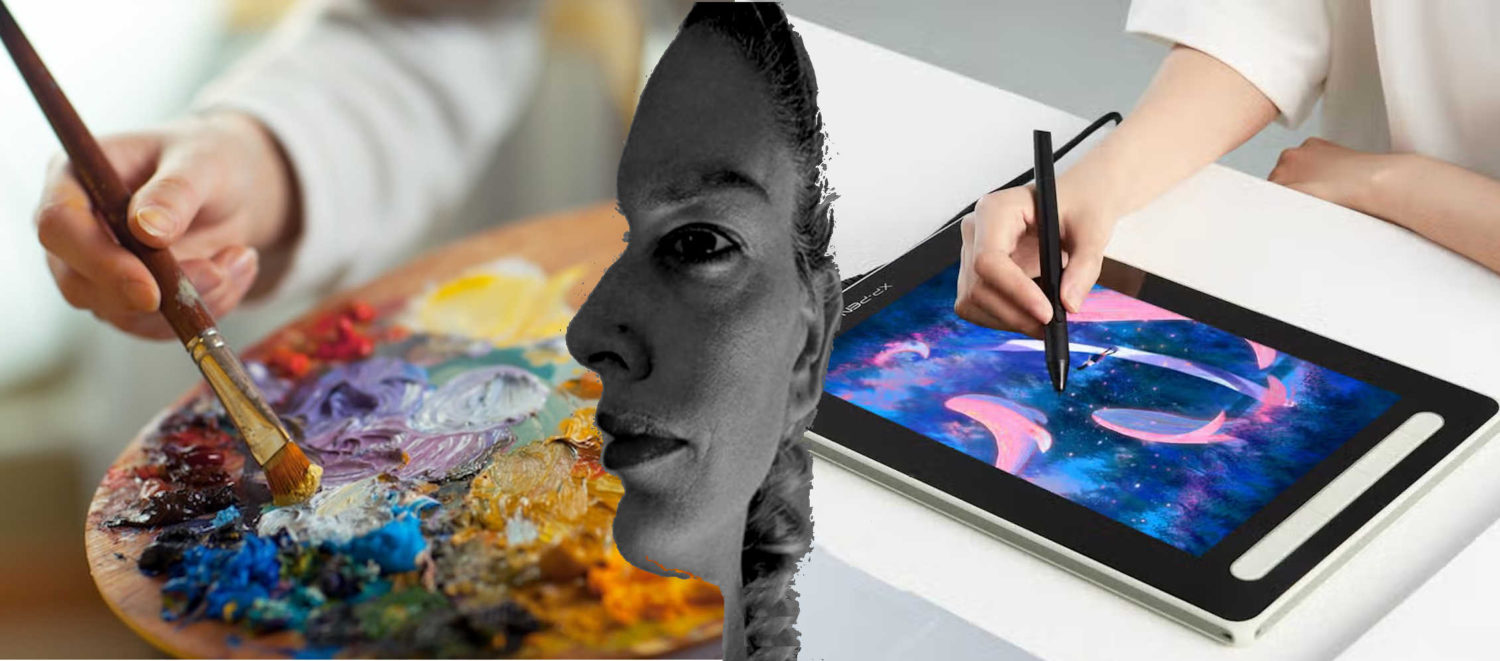
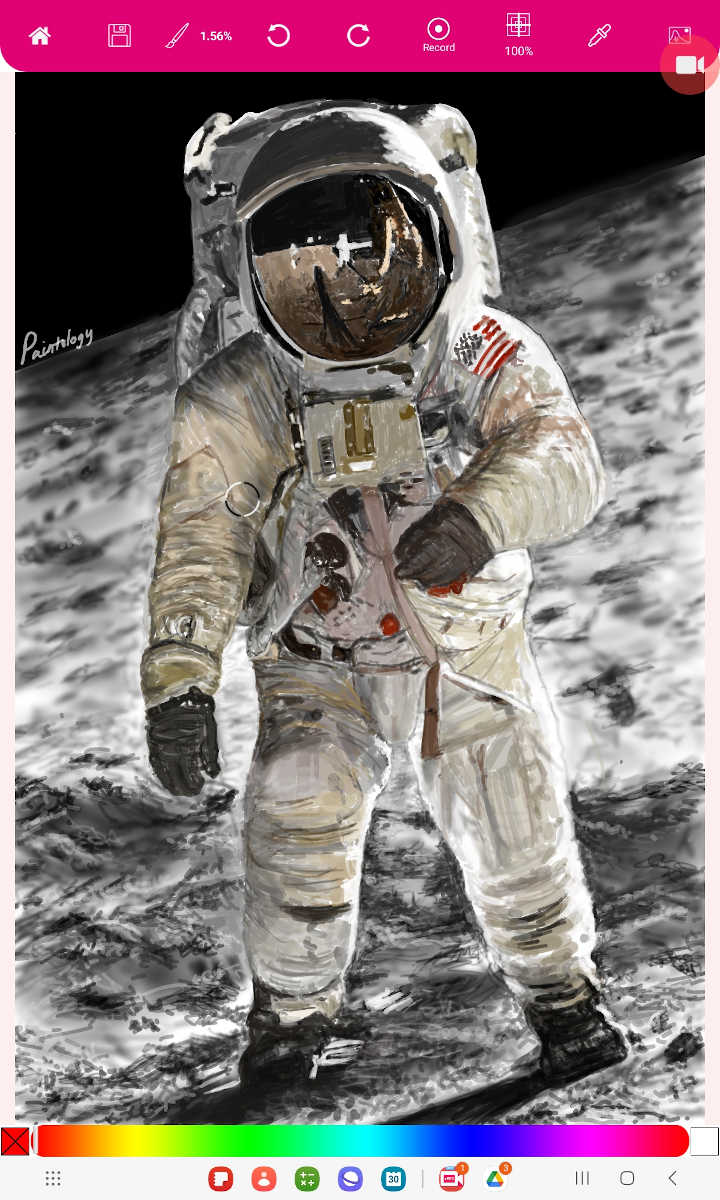

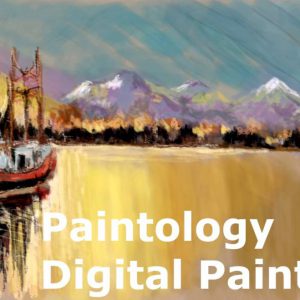
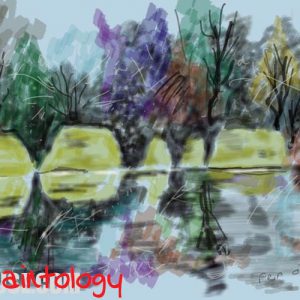
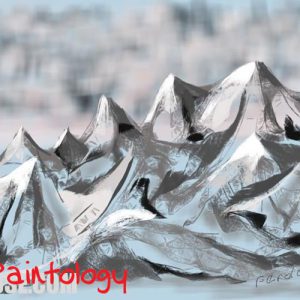
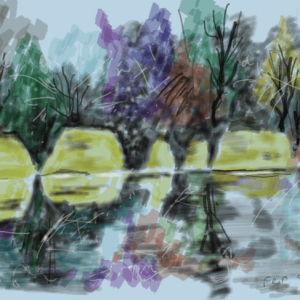
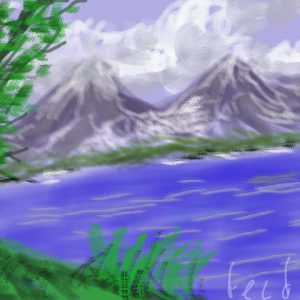
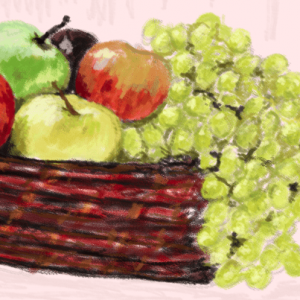
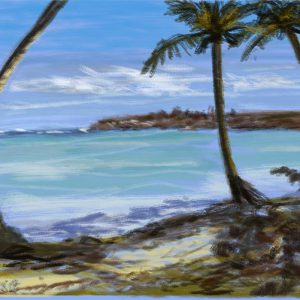
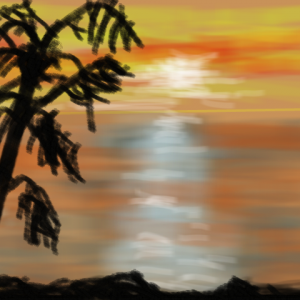
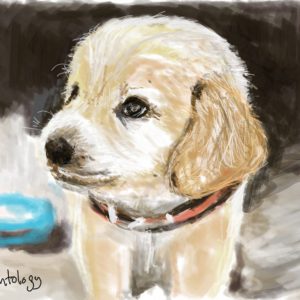


 Digital Canvas
Digital Canvas
Leave a Reply